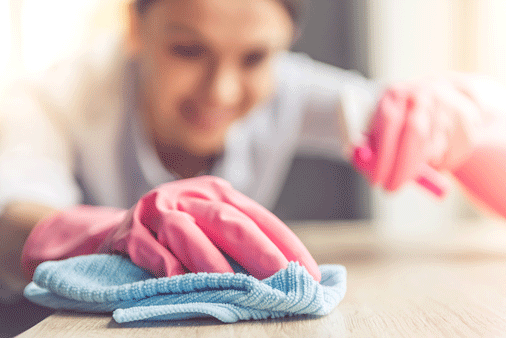9 Germ-y Places to Avoid (or Disinfect) This Winter
 As winter settles in, it’s time to brush up on your disinfecting smarts. Harmful bacteria can lurk in places you’d never suspect, and knowing which places to be wary of can help you avoid getting sick this winter.
As winter settles in, it’s time to brush up on your disinfecting smarts. Harmful bacteria can lurk in places you’d never suspect, and knowing which places to be wary of can help you avoid getting sick this winter.
At home
There are harmful microbes all over our homes-and most are found in the kitchen.
Kitchen sink
According to microbiologist Charles Gerba, there is more fecal bacteria in your kitchen sink than there is in your toilet after flushing it.
Gerba recommends regularly scrubbing your sinks with diluted bleach, or with a kitchen cleaning product that contains bleach. For best results, allow the cleaning solution to sit for a bit before wiping, or use wipes for a more targeted cleanup. Be sure to clean the entire sink and all nearby surfaces, as well.
Kitchen sponge
A 2017 study found 362 species of bacteria living in used kitchen sponges. Microwaving those sponges had no effect on the bacteria. To keep it from becoming a hotspot for germs, replace your kitchen sponge once a week.
Refrigerator
The National Sanitation Foundation (NSF) found that 36% of tested refrigerator meat compartments contained salmonella and E. coli, while 36% of vegetable compartments tested positive for salmonella and 14% contained listeria. Gerba adds that refrigerator door handles can be germ-infested as well.
Use bleach cleansers for wiping down the inside and outside of your refrigerator on a regular basis.
Cooking equipment
According to the NSF, 36% of tested rubber spatulas and pizza cutters contained E. coli. And cutting boards fared no better.
“Recent surveys of homes found more fecal bacteria on a cutting board in the average home than a toilet seat,” said Gerba.
Wipe down all cooking elements after each use with the same diluted bleach solution you’re using for your sink.
In restaurants
Tables
It’s a good idea to look at how tables are being cleaned. If they’re not being sanitized with a bleach solution, ask for extra napkins to keep from putting silverware directly on the tabletop.
Restaurant menus
They’re handled by hundreds of diners, and rarely cleaned; so it’s no wonder they’re full of germs! Be sure to wash your hands after placing your order.
Lemon wedges
According to a study published in the Journal of Environmental Health, nearly 70% of lemon wedges on the rims of restaurant glasses contain disease-causing microbes. When dining out this winter, tell your server you’ll skip the fruit on your glass.
Condiment containers
Restaurant condiment containers can rapidly spread germs from one diner to another. Wipe down the condiment container with a disinfectant wipe or hand sanitizer before using.
In public places
Shopping carts
To keep yourself from bringing home the germs of shoppers who used your cart before you, wipe down the handles with a disinfectant wipe and wash all produce well before eating.
The doctor’s office waiting room
If you need to visit the doctor this winter, try to keep at least two chairs between you and other patients. If you’re bringing children along, also bring your own books to keep them occupied.
« Return to "Blog Home"

